Cats are the perfect pet. They are cute, cuddly, endlessly entertaining, and look adorable when sleeping. However, one thing that continues to frustrate cat owners is constant feline shedding. While feline shedding is natural and normal, sometimes you'll notice your feline shedding more than usual.
When you notice this, figuring out why it's happening is essential. We will review some common reasons your cat might be shedding more than usual and offer many tips for reducing shedding. You'll be wearing black again in no time!
Why Do Cats Shed & Is It Normal?
You pick up your cat and notice your shirt is entirely covered in fluff. Or you sit down on the couch and realize that you can tell exactly where your cat chose to sleep because it's now blanketed with fur. This can seem a bit excessive and concerning — or even just annoying. But the shedding is completely normal for cats! While every cat sheds when stressed a different amount, cats will shed every day. They also have two larger hair loss cycles each year.
When you adopt a kitty, you are basically acknowledging that their fur will be on the furniture, the floor, dead hair, and even on your clothes. That's the daily struggle of having a cat, which is why so many cat owners equip themselves with lint rollers and use robotic vacuums to pick up cat hair off the floor each day.
How Much Shedding Is Normal for Cats?
Every cat sheds differently, depending on their genetics, breed, and hair length. You'll notice that you can often get a handful or two of cat hair off your cat every time you brush them. Despite all the loose fluff, your cat will maintain a soft, shiny coat.
Here are some signs that your cat's shedding is abnormal:
- Their coat is becoming much thinner than normal.
- You can see irritated or inflamed skin underneath their fur.
- Your cat starts vomiting up more hairballs than usual.
- You find clumps of cat fur around the house.
- Your cat is excessively grooming certain areas of the body.
- Their fur feels sharp and looks raggedy.

Cats That Shed More Than Average
You'll notice more fluff around the house if your cat has long hair or a double coat. Many breeds of cats typically shed more often than others due to their luxurious fur.
Some of these extra-shedding breeds include:
- Ragdoll
- Persian
- Maine Coon
- Norwegian Forest Cat
- Birman
- Manx
Cats That Don't Shed Much
For cat lovers who are a bit more particular about shedding, there are, luckily, some cat breeds out there that have shorter, thinner coats. You'll notice a lot less shedding with the following breeds.
- Bengal
- Bombay
- Siamese
- Cornish Rex
One cat you might be surprised to find in this list is the Siberian. This regal-looking feline has quite an oversized coat. But this cat's fur is known to shed less than the average cat and is even hypoallergenic. Their weather-resistant coat produces far less Fel d 1 protein (the stuff that triggers allergies) than other cats.
And you can't forget about hairless kitties! The Sphynx, Peterbald, Donskoy, and other Sphynx hybrids have just a bit of peach fuzz at most. These breeds are perfect for families who don't want to see fur on their newly folded laundry. But it's important to remember that hairless cats require a bit of extra work. These cats are sensitive to the sun. Their skin also gets quite oily, leading to skin irritation and acne if not properly bathed and cared for.

RELATED: Sphynx Cat Breed
Why Is My Cat Sheds So Much?
Don't get too worried if your cat is shedding. Unless you notice chunks of fur or red skin, your cat's doing normal shedding, which is all part of being a cat! Still, you might notice more loose hairs than usual for some reason.
The Time of Year
While cats shed all year, the shedding picks up during certain seasons. In the winter, cats tend to grow a thicker coat. Cats will start shedding that extra fur once the weather warms up in the spring and the days grow longer.
Health Issues
Various health issues may be causing your feline or furry friend to shed more than usual. These issues may include:
- Allergies
- Parasites
- Bacterial infections
- Tumors
- Bowel diseases
- Skin conditions
Low-Quality Food
Cats maintain a healthy coat from grooming and the proper nutrients from a balanced diet. The food you're feeding your cat should have a high-quality protein source listed at the start of the list of ingredients. This means it shouldn't be a meal or starch. It would help if you also looked for copper, Vitamin A, Vitamin E, zinc, omega-3, and omega-6 fatty acids.
Without these ingredients in cat foods, your cat is most likely not getting the proper nutrients they need to keep their coat healthy. And a cat with an unhealthy coat is often a sign that other things are wrong, too.
Stress or Anxiety
Do cats shed more when stressed or do cats shed when stressed? Yes, cats shed when stressed or anxious. But why do cats shed when stressed? When I moved with my cat, I had to carry him through a metal detector at the airport. He was shaking and clinging to me. I have never seen so much fur come off of him. His carrier was coated! Anxiety causes increased shedding because a cat's muscles tense up when it is stressed. This results in the follicles of some hairs being released.

Age
Just like us, older cats are a bit less flexible. This might make grooming certain areas a bit tougher for some older kitties. When they can't lick certain spots as efficiently, that area might shed more since they can't clean up the loose fur or furs and keep the place clean. The same thing can happen when cats are overweight. Extra-weight cats can have trouble reaching certain areas, especially the spot above their tail. You'll notice your overweight feline shedding more than expected since they can't clean excess fur properly.
Hormonal Changes
The hormonal changes during pregnancy can cause a cat to shed more fur than usual. Most hair loss occurs on the mother cat's belly, which allows her kittens to nurse more easily.
How Can I Stop My Cat From Shedding?
Your cat will permanently shed — especially if they have more fur. But you can make your cat shed less with some effort. Just remember that shedding is normal! You might want to consider a hairless breed if you're allergic to cats shedding fur or can't stand to see cat hairs.
Cat Shampoo for Shedding
Some cat shampoos promote less shedding and stronger hair. Top shampoos contain omega-3 or mega-6 fatty acids, which strengthen hair follicles and promote healthy fur. Your cat will still shed, but you might notice it's a bit less when using this product.
Bathe Your Cat Once a Month
The issue with cat shampoo is that most of it requires you to bathe your cat. Not only is that always a hassle (and may leave you with some battle wounds), but it's not healthy or required to bathe a cat frequently. We recommend washing a cat just once a month at most—and only if it's necessary. To help your cat through the process, give it some CBD oil on its food beforehand. This can help it calm down and feel more relaxed.
Related: How to Bathe a Cat: 6 Tips for a Safe, Scratch-Free Bath
Give Them Calming Treats
Speaking of CBD, a CBD treatment schedule could be a great way to reduce your cat's shedding. If your cat is shedding due to a stressful situation or an anxious personality, CBD cat treats can help soothe it and allow it to be less tense. This will ensure that your cat doesn't shed as heavily from stress.
CBD is a non-intoxicating phytocannabinoid, which means that it's a compound naturally found in hemp that won't get your cat high. No THC is present, so your cat won't experience any negative side effects. Instead, your cat will experience all of the benefits of CBD when it supports their body's endocannabinoid system (ECS).
The endocannabinoid system maintains homeostasis and overall well-being for your cat (and all mammals). The ECS has endocannabinoid receptors throughout all of its systems. This includes the nervous system, digestive system, and immune system. When CBD interacts with the receptors, it can positively affect your cat's mind and body.
Related: Endocannabinoid System in Dogs & Cats Explained
Our CBD cat treats contain salmon oil, making them even more beneficial to your cat's fur. Salmon oil contains omega-3 fatty acids, promoting healthy skin and coat. You might notice a difference in your kitty's skin and coat if you give them CBD treats regularly!
Brush Your Cat Regularly
Regular brushing is the most effective way to remove dead hair and limit your cat's shedding. When you brush your cat, you collect all of their loose hairs. So, if you brush your cat consistently, you will notice less fur on your clothing and furniture over time. Invest in a quality slicker brush. The wires get deep into your kitty's fur, removing loose hair and dander. Some slicker brushes are explicitly made for long-haired cats. Their bristles are long enough to get through their top coat and reach the hairs below.
There are also de-shedding brushes that purposely target your cat's bottom coat, eliminating extra loose hairs. The Furminator's curved handle is perfect for adequately reaching your cat's fur. It also has a comfortable handle to keep brushing until the loose hairs are all gathered. Some cat owners like mesh and rubber gloves. They can easily lift pet hair and dander. Wash the gloves with soap and warm water after each use, and let them dry completely before using them again.

Keep Them Hydrated
A dehydrated cat might shed more than usual, and many cats are prone to dehydration. That's because cats are particular about their water source. If you notice that your cat is lethargic, shedding constantly, and its water bowl is untouched, it's time to try a new tactic to get it to drink. Cats love running water, which is why you often see them drinking out of sinks and toilets. If your cat is fascinated by running water, try a cat water fountain.
Also, make sure your cat's bowl is clean. If your cat's water bowl contains hairs and other contaminants, it might refuse to drink. Being dehydrated is problematic for cats, so don't let them go without water for too long.
Change Their Diet
Cats eating low-quality food are missing a lot of key ingredients that keep them — and their coat — healthy. This includes omega-3 and omega-6 fatty acids, along with taurine. Taurine is an amino acid that cats require to stay healthy but don't produce themselves. This must be in any cat food your kitty consumes.
Your cat might also start shedding more if it is allergic to its food. Most cat food allergies come from carbohydrates. Cheaper cat food will replace healthy ingredients with carbohydrates and other "fillers" like cornmeal. If you notice a lot of this in your cat's food, try changing to a brand with more protein and fewer nutritionless fillers.
Use Fatty Acids in Their Diet
You can also try adding CBD oil to your cat's daily food. CBD oil is blended with hemp seed oil, which has all the omegas your cat needs to maintain healthy skin and cat's coat. Unsure how much CBD oil to give your kitty? We recommend 0.25 mg of CBD per 1 pound of body weight. That means a 10-pound cat would 2.5 mg of CBD every eight hours or once a day.
If your cat struggles with a condition and its side effects, you might want to try giving it a more potent dose every eight hours. This would be 0.50 mg of CBD per 1 pound of body weight. Now the 10-pound cat would get 5 mg of CBD.

RELATED: CBD Dosage Guide for Dogs & Cats
Inspect for Fleas & Mites Regularly
Insects and parasites — including mites, fleas, ringworm, etc. — irritate your cat's skin, causing them to scratch and bite certain areas excessively. The added grooming will lead to more hair loss and shedding. If you notice areas of your cat's body with significantly less fur or patches of hair missing, you should contact a vet immediately.
Help Your Cat Stay Active
Daily exercise will ensure your cat stays fit and flexible enough to groom every part of their body. Overweight cats can struggle to clean specific areas, leading to unhealthy skin and fur. This causes more dandruff and shedding. Keeping your cat fit and healthy will ensure they can groom properly and get these troublesome areas.
Final Thoughts
Shedding can be frustrating for cat owners, but it's a normal part of being a cat. While your cat will permanently shed, there are ways to reduce the amount of fur you see around your home if you ensure your cat is healthy, happy, and well taken care of. Set aside time to brush your cat daily, and you'll notice much less fur floating around the house!

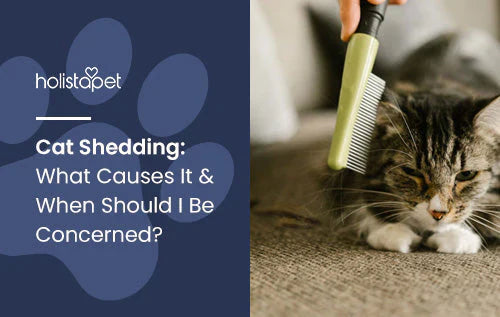

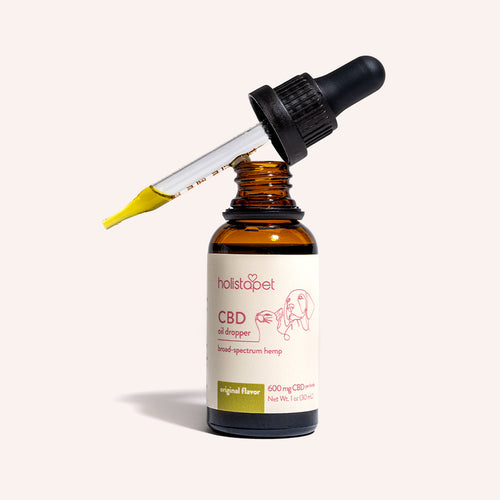 CBD Oil for Cats - Fast Acting
CBD Oil for Cats - Fast Acting
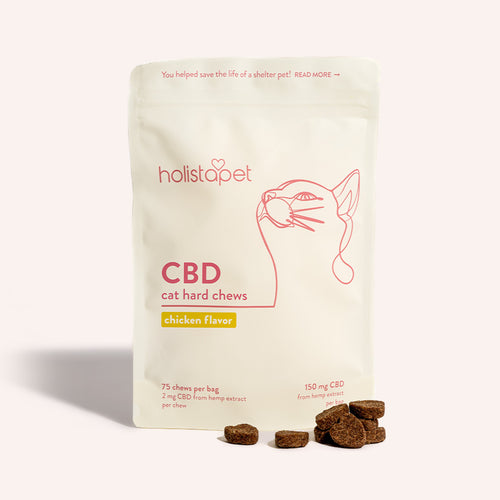 CBD Cat Treats - Easy Dose
CBD Cat Treats - Easy Dose
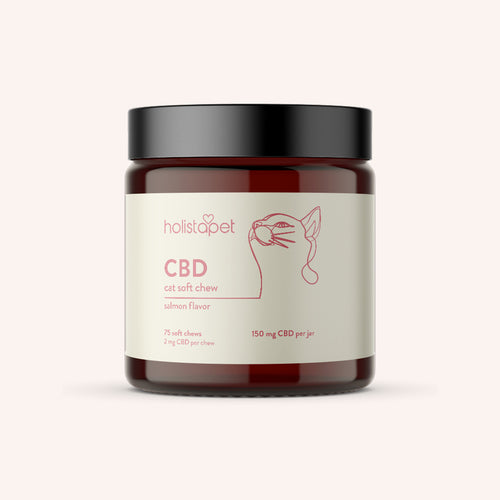 CBD Calming Chews for Cats - Highly Rated
CBD Calming Chews for Cats - Highly Rated
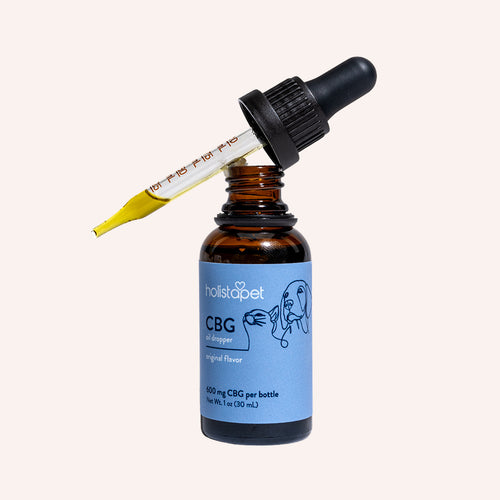 CBG Oil for Dogs and Cats - Loved by Thousands
CBG Oil for Dogs and Cats - Loved by Thousands



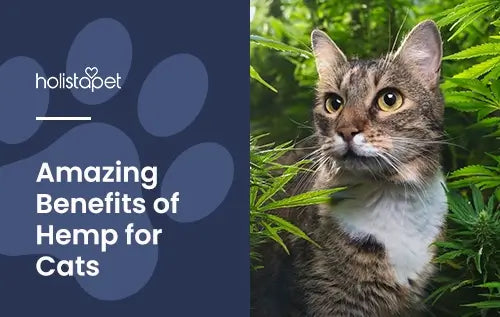

Leave a comment
All comments are moderated before being published.
This site is protected by hCaptcha and the hCaptcha Privacy Policy and Terms of Service apply.